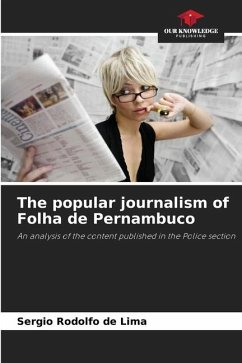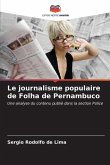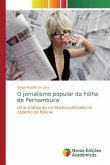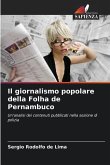The aim of this book was to understand the relationship between popular journalism and sensationalism in Pernambuco, using the police section of the Folha de Pernambuco newspaper as an object of study. Some editions of the newspaper were analysed in order to identify the use of sensationalism. The study presents the differences and characteristics of popular journalism and sensationalism, the limits of the concept of sensationalism, the language used by popular newspapers, the production of news and the relationship between popular journalism and citizenship. With the content analysis applied to the Police section, it was possible to observe and understand the content that is reported in the vehicle and the audience to which the newspaper is directed. The change in the focus of photojournalism and the newspaper's language were some of the main changes that occurred in the section studied. Based on the works of journalists Márcia Franz Amaral (Jornalismo Popular) and Danilo Angrimani (Espreme que sai sangue), the research comes to the conclusion that the content analysed presents few characteristics in quantity, in the published content, that could be considered sensationalism.
Bitte wählen Sie Ihr Anliegen aus.
Rechnungen
Retourenschein anfordern
Bestellstatus
Storno








